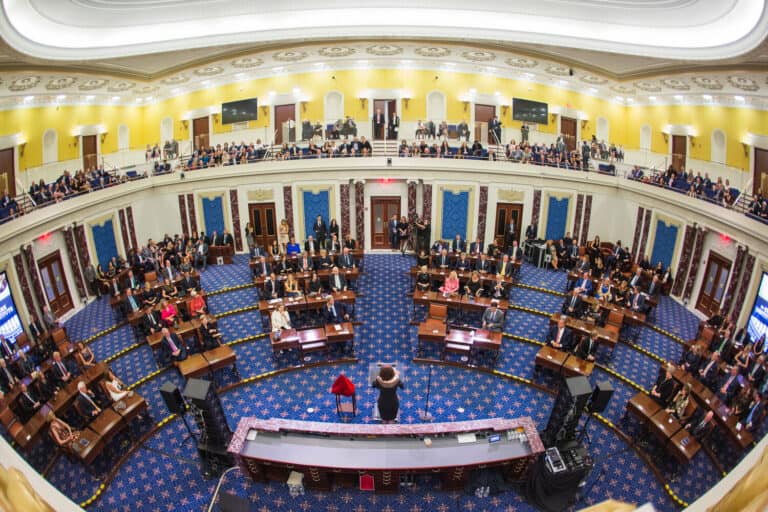Divya Nimmagadda is a student at Harvard Law School.
This is the first in a two-part post about the Remedy Clause. This post provides a general overview, while the next will go into more detail about future use cases.
In recent years, there has been a resurgence of interest in state constitutionalism within the realm of labor and employment law. As advocates and scholars seek to embed stronger protections for workers within state constitutions, one promising yet underexplored provision is the Right to Remedy Clause. Despite being enshrined in some form in 40 state constitutions, this clause has attracted little sustained attention from courts or legal scholars. Unlike well-established constitutional doctrines such as Equal Protection or Due Process, the Right to Remedy has generated minimal case law and lacks a federal analog or rich legislative history. This ambiguity surrounding its purpose and scope has led to varying interpretations across states—but therein lies its potential.
Precisely because the doctrinal slate is relatively blank, the Right to Remedy Clause presents a valuable opportunity to expand and entrench the scope of rights available to workers. Furthermore, in the absence of federal guidance, state courts frequently look to one another’s decisions when interpreting their own clauses. A robust doctrine developed in one jurisdiction could therefore ripple outward to other courts across the country.
Historical Foundations of the Right to Remedy
The origins of the Remedy Clause trace back to Chapter 29 of the Magna Carta and English common law. Much of the early interpretation stems from the writings of Sir Edward Coke, who identified two key remedial concepts embedded in the provision. The first is the now-familiar idea of due process—protecting individuals against arbitrary government action. The second, more relevant to employment and labor rights, guarantees remedies to vindicate private rights between individuals. Coke’s articulation of this latter concept was sweeping:
[E]very subject of this realm, for injury done to him in goods, lands, or person, by any other subject… may take his remedy by the course of the law, and have justice, and right for the injury done to him, freely without sale, fully without any denial, and speedily without delay…
Today, state constitutions typically express this clause in one of two forms. Eleven states adopt a longer formulation closely resembling Coke’s original language. The majority—27 states—use a more concise version. For instance, the Illinois Constitution provides:
Every person shall find a certain remedy in the laws for all injuries and wrongs which he receives to his person, privacy, property or reputation. He shall obtain justice by law, freely, completely, and promptly.
This version can be understood as encompassing three interlocking guarantees: (1) the existence of a legal remedy for injuries, (2) accessibility to the courts, and (3) the timely and complete delivery of justice.
A survey of the case law across the states reveals several potential uses for this clause, but below I highlight two immediate pathways that have already led to positive outcomes.
Leveraging the Clause to Protect Immigrant Workers
Though Hoffman Plastic Compounds v. NLRB (2002) essentially closed off remedial access for unfair labor practices against undocumented workers based on policy conflict with the Immigration Reform and Control Act (IRCA), the Remedy Clause may be able to extend remedial coverage to such workers at the state level. In Escamilla v. Shiel Sexton Company, the Indiana Supreme Court in 2017 used the Remedy Clause to hold that Hoffman’s holding did not shut off or preempt the state court’s ability to provide a remedy under common law. In this case, Noe Escamilla suffered a permanently disabling workplace injury, but his employer challenged the payment of worker’s compensation on the basis of Noe’s undocumented status.
The Court rejected that argument, stating:
The Indiana Open Courts Clause’s ‘every person’ guarantee… does not exclude unauthorized immigrants… When Indiana law affords a remedy—like recovering decreased earning capacity—the Open Courts Clause does not permit us to close the courthouse door based solely on the plaintiff’s immigration status….
Critically, though, Hoffman’s issue—whether federal immigration law under IRCA limited remedies for National Labor Relations Act violations—was only about reconciling two federal statutes. Hoffman thus ‘is a narrow decision that does not touch on state common law.’
While this was a worker’s compensation case, the logic could potentially extend to provide protection for retaliatory dismissals under the logic of wrongful dismissal tort, especially for workers excluded from federal protections. The Mississippi Supreme Court announced a similar interpretation of their Remedies Clause and, given the horizontal lockstep analysis in this area, other states can follow suit.
Remedy Clauses and Legislative Schemes
State courts have generally interpreted the Remedy Clause as offering substantive—not merely procedural—protections. This interpretation constrains legislative power to repeal or significantly limit established remedies, though the precise boundaries of that constraint remain unsettled.
A notable example comes from Florida. In Westphal v. City of St. Petersburg (2016), the Florida Supreme Court invoked the Clause to strike down a statutory cap that limited temporary total disability benefits to 104 weeks under the state’s workers’ compensation scheme. The Court found this limit unconstitutional because it failed to provide a “reasonable alternative” to traditional tort remedies:
There must eventually come a ‘tipping point’ where the diminution of benefits becomes so significant as to constitute a denial of benefits—thus creating a constitutional violation.
Earlier, the Court had upheld a reduction from 350 to 260 weeks, reasoning that the broader compensation framework still offered adequate protection. But the 104-week limit, coupled with the statutory gap faced by workers who had not reached maximum medical improvement, crossed the constitutional threshold. The Court concluded that no “overwhelming public necessity” justified such a dramatic cut.
The Oklahoma Supreme Court has also engaged in similar balancing exercise to ensure the legislature doesn’t render the state’s worker’s compensation scheme null:
“In order to pass constitutional muster under the Oklahoma Constitution’s Right-to-Remedies Clause, a workers’ compensation provision must be measured against the delicate balancing of rights of employers and employees, which constitutes the Grand Bargain legislatively imposed through the Workers’ Compensation Act….The forfeiture provision tips the delicate balance achieved in the Grand Bargain too far in favor of employers and therefore it fails to provide an adequate substitute remedy to injured workers as required by the constitutional mandate of Article II, section 6.”
The Right to Remedy Clause, long overlooked, holds transformative potential in the labor and employment field. It offers a mechanism for expanding access to justice, particularly for vulnerable workers who fall through the gaps of federal protections. Whether through state tort claims for undocumented workers or judicial limits on legislative erosion of compensation rights, this provision is ripe for revitalization. As state courts continue to look to one another in interpreting these clauses, a single bold doctrine in one state could catalyze broader change across the country.










Daily News & Commentary
Start your day with our roundup of the latest labor developments. See all
October 30
Sweden’s Tesla strike enters its third year; Seattle rideshare drivers protest Waymo’s expansion in the city.
October 29
9th Circuit rejects challenge to NLRB's constitutional structure; preemption challenges to state labor peace statutes
October 28
Two federal unions oppose CBA cancellations, another federal union urges Democrats to end the government shut down, and Paramount plans for mass layoffs
October 27
GM and Rivian announce layoffs; Boeing workers reject contract offer.
October 26
California labor unions back Proposition 50; Harvard University officials challenge a union rally; and workers at Boeing prepare to vote on the company’s fifth contract proposal.
October 24
Amazon Labor Union intervenes in NYS PERB lawsuit; a union engages in shareholder activism; and Meta lays off hundreds of risk auditing workers.